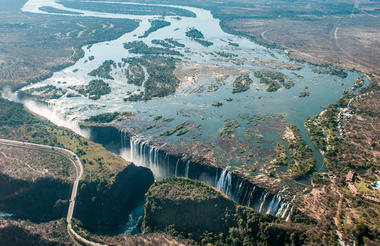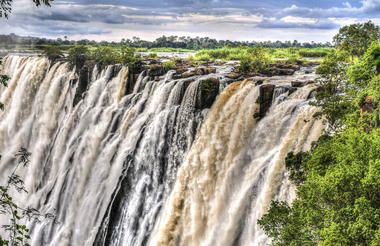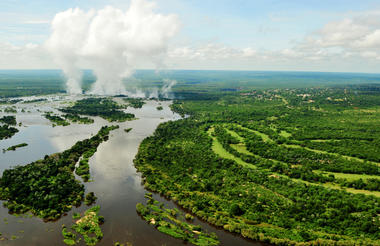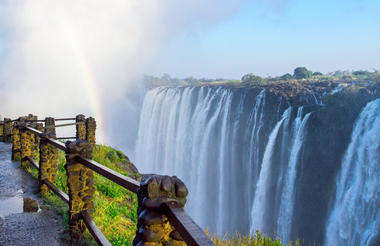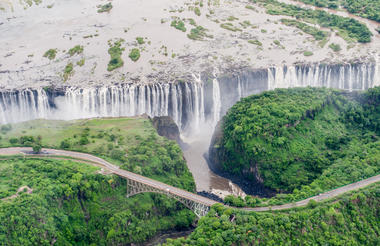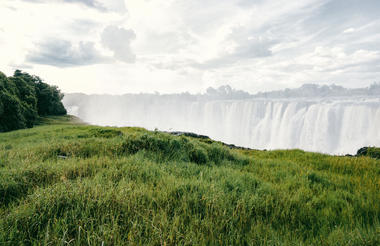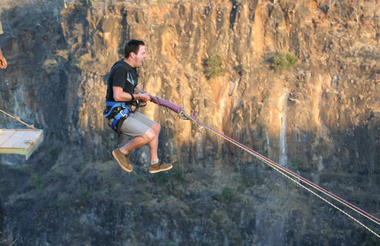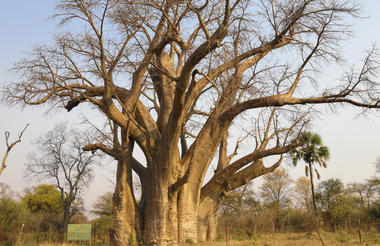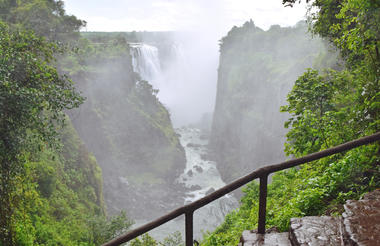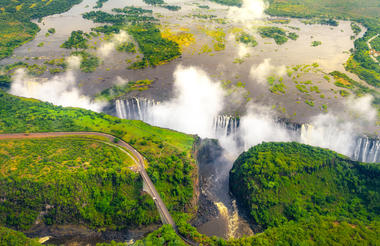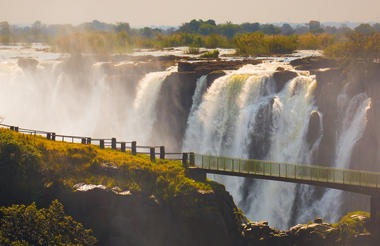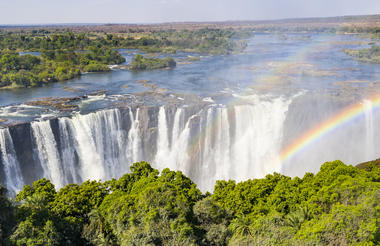Whilst the region around the city of Johannesburg is incredibly ancient and includes the discovery of a 3 million-year-old Australopithecus africanus in a cave near Sterkfontein, just outside Jozi, the city’s exciting history began only in 1886 with the discovery of gold and the Witwatersrand reef. It didn’t take long for the population of the city to explode from a few shanties into what became, and has remained, the largest city in South Africa. Today Johannesburg is one of the world’s youngest major cities and the powerhouse of the African continent.
The discovery of gold in the region of Johannesburg spurred a mass migration to the area of people wanting to try their luck. The resultant settlement that mushroomed within the space of three years was named by two men, with the first name ‘Johannes’ in common. It leaves little to the imagination then, as to the origin of the city’s name. ‘Burg’, the second syllable, is the Afrikaans word derived from the Dutch ‘village’, similar in some ways to the English word ‘burgh’ meaning ‘town’.
Racial segregation had already become firmly entrenched in the country between the world wars – blacks and Indians were heavily taxed, barred from holding skilled jobs and forced to work as migrant labour – hence the emergence of squatter camps that sprung up around Johannesburg as blacks headed to the city in the wake of industrialisation. These camps developed by all accounts into well-organised cities, and perhaps due to this, were destroyed, forcing people to move to new suburbs known as the South-Western townships, leading to the emergence of Soweto.
Today Jozi is free of discriminatory laws. The inner city is awash with hawkers and street stalls, completely multiracial, and undergoing a total regeneration.
Sandton
Despite Johannesburg’s city centre doing its utmost to change perceptions about its capacity to function as the heart of the city, Sandton continues to reign as the most important financial and business district in South Africa, and arguably sub-Saharan Africa. It has been such since 1990 when the mass exodus to the northern suburb first began, and Sandton became known not only as a materialistic centre, but as a refuge of the ‘white flight’ from Johannesburg’s CBD.
It is hard to believe that this sophisticated district, home to the top investment banks, financial consultants, the Johannesburg stock exchange, and one of the biggest convention centres on the continent, was but mere sandy horse trails where the ‘mink and manure set’ lived on wealthy, large estates 50 years ago - small wonder it is known as one of the most opulent areas in Johannesburg.
Sandton started life at the beginning of the century as the suburb of gentlemen – properties were no smaller than one morgen (just less than one hectare). Life has fundamentally not changed, although the landscape has radically altered. Gone are the farms and the sedate way of existence for the white upper class, to be replaced by glass and chrome buildings, and South Africa’s emerging black middle-class: the ‘empowerment kugels’, according to author Sarah Britten, do lunch not in Soweto but in Sandton.
Known as ‘Africa’s richest square mile’, Sandton has headed upward with a barrage of Manhattan-style skyscrapers that function as landmarks throughout Johannesburg, particularly Sandton City’s pyramid-style rooftop. Visit Nelson Mandela Square, various art galleries, or go on a personal walking tour that takes in 29 Sandton landmarks and stops off at various restaurants.
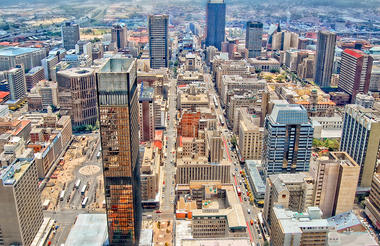
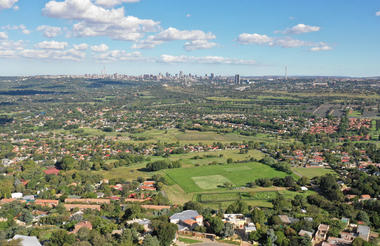
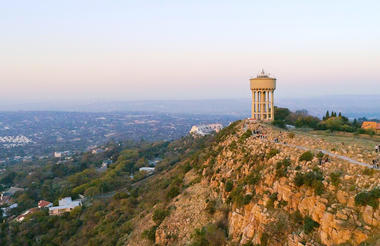



Situated in western Zimbabwe, the Hwange National Park is the country's biggest reserve, home to a profusion of wildlife, including giraffe, lion, zebra and approximately 40 000 elephants. It provides a sanctuary for all the country’s endangered species, including a population of wild dogs thought to be among the most sizeable surviving groups on the continent. The park’s magnificent terrain ranges from desert dunes, savannah lands and mopane woodlands to rocky outcrops and sparse forests. Visitors can look forward to game drives, guided walks or horse riding safaris. Other highlights include: the Bumbusi National Monument and the Nyamandhlovu Pan.
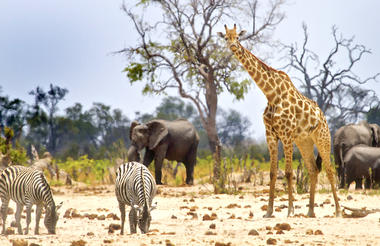
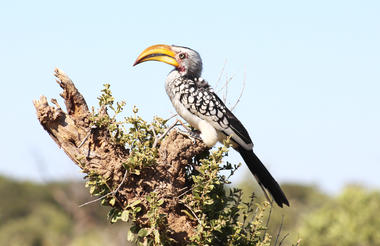
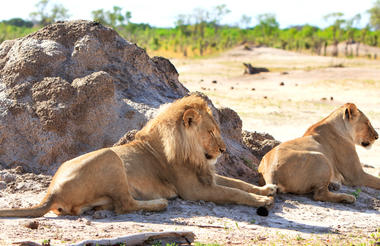
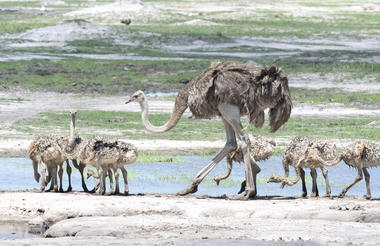


Located in western Zimbabwe, Hwange National Park (formerly Wankie Game Reserve) is the largest natural reserve in the country and is famous for its rich diversity of wildlife. Home to one of the biggest elephant populations in the world, as well as around 100 mammal species, the park is popular among animal lovers. Several protected species inhabit the awe-inspiring open landscapes, including the endangered wild dog, critically endangered black rhino, and rare roan and sable - along with lion, cheetah, and around 500 bird species. Adventurers can look forward to guided bush hikes, game drives, and horse riding safaris, all of which offer excellent photographic opportunities.
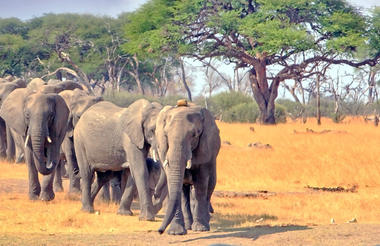
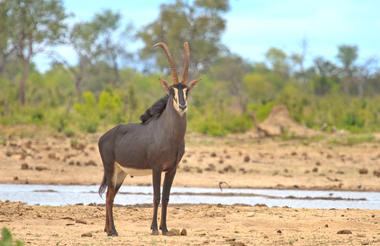
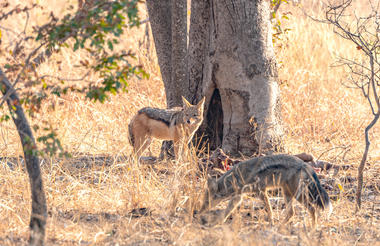
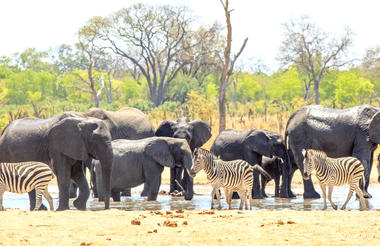
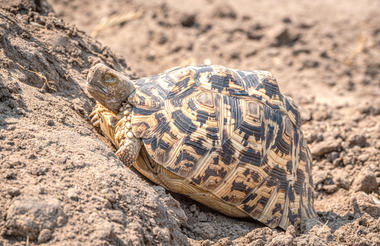
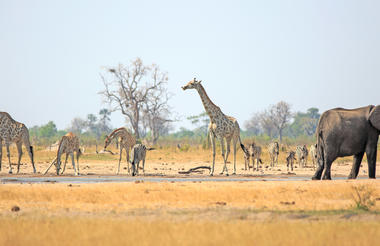
As previously described
Located in northern Zimbabwe, the life-giving power of the Zambezi River makes Mana Pools National Park one of Zimbabwe’s most lush and flourishing regions. Characterised by a diversity of landscapes including floodplains, forests, and baobab trees, the park has been designated as a UNESCO World Heritage Site for its natural beauty; providing a fantastic destination for photographers. It is an Important Bird Area and is also one of the continent’s premier game-viewing locations, known for its good chances of seeing elephants, wild dogs, lions, and leopards. Visitors can look forward to an array of activities such as canoe trips, guided walks, game drives, river cruises, nature walks, bird watching, and catch-and-release fishing.

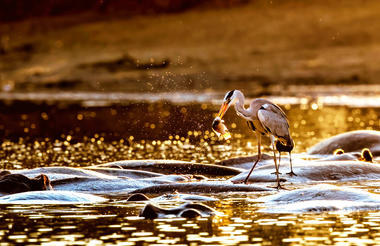




The Victoria Falls constitutes one of the most spectacular natural wonders of the world. The Local people call it "Mosi-oa-Tunya" -- the smoke that thunders and the Falls are remarkable.
There is a magic about them manifested in the towering column of spray when the river is high, the thunder of the falling water, the terrifying abyss and tranquil lagoons upstream in which hippo and deadly crocodiles lurk.
The Victoria falls is 1 708 meters wide, making it the largest curtain of water in the world. It drops between 90m and 107m into the Zambezi Gorge and an average of 550,000 cubic metres of water plummet over the edge every minute.
Remarkably preserved in its natural state, Victoria falls inspires visitors as much today as it did David Livingstone in the 1860's. The falls and the surrounding area have been declared National Parks and a World Heritage Site, thus preserving the area from excessive commercialisation.
Seasons
Victoria Falls Waterfall is fed by the waters of the mighty Zambezi River. Therefore it goes without saying that when there is more water in the river there is more water going over the falls.
The catchment area of the Zambezi River is the Angolan Highlands, and it takes about 6 months for the water to filter through to Victoria Falls Area. Therefore the flow of water over the falls has absolutely nothing to do with the ambient weather. For example, in winter which is a traditionally low rain fall time, the flow of the falls is at its greatest, whilst during the summer, which is traditionally a higher rain fall period, the flow of the falls is exceptionally low.
For security reasons many guests prefer to travel to the Zambian side of the falls. However the gradient of the land means that the Zambian side of the falls is slightly higher than the Zimbabwean side of the falls. Therefore when the water level drops from the river, it subsides from the Zambian side first. Therefore between October and January the Zambian side of the falls has little to no water going over it. Therefore in order to fully appreciate the Victoria Falls at this time of year, a visit to the Zimbabwean side is almost mandatory.
Water levels in the Falls can affect river activities, especially the River Rafting. As a general rule the River Rafting does not operate in April as the gorge is too full and the water levels dangerous. This does vary according to season and the prevailing waterlevels so speak to your Rhino Africa consultant about the time of year you intend travelling and establish which activities are available
'High water' occurs between February and July, and peaks between March and April. During this period, a rise of one metre in the level of the Zambezi river produces a 5 metre increase in the level of the water forced through the gorge. The spray thrown up is dense, drenching and thick with rainbows - a fantastic sight when viewed from the air.
‘Low Water’ period runs between August and January and is at its lowest between November and early December. This is the time when there is very little spray and visitors are able to fully appreciate the geological formation of the falls and the full length and breadth of them. The water level in the gorge drops and the Zambezi River becomes its most awesome and deserving of its white water rafting reputation as being the wildest experience in the world
Summer is from around October to April, during which it gets quite hot - to around 30°C, while night temperatures drop to around 14°C. Thunderstorms may occur in the late afternoon. The rainy season is from November to March.
Winter is roughly from May to September/October. The days are generally dry and sunny - around 20°C, with the temperature falling at night when it can get as cold as 5ºC.
National Parks
Open to visitors throughout the year, the Victoria Falls National Park in north-western Zimbabwe protects the south and east bank of the Zambezi River. It covers 23.4 km² extending from the larger Zambezi National Park about 6 km above the falls to about 12 km below the falls.
A notable feature of the park is the rainforest which grows in the spray of the falls, including ferns, palms, liana vines, and a number of trees such as mahogany not seen elsewhere in the region.
Mosi-oa-Tunya National Park in Zambia is an UNESCO World Heritage site and is twinned to the Victoria Falls National Park on the Zimbabwean side. The Park covers 66 km² (25.5 square miles) from below the falls in a north-west arc along about 20 km of the Zambian river bank.
It froms the south-western boundary of Livingstone and has two main sections, a wildlife park at its north-western end and the land adjacent to the Victoria Falls.
The national parks contain abundant wildlife including sizable populations of elephant, buffalo, giraffe, zebra, and a variety of antelope.
Activities
No one is going to complain of being bored in Victoria Falls. Frequently and affectionately coined the adventure capital of the world, there are lots of things to see and do in Victoria Falls. Activities on offer include: Bungee Jumping, White Water Rafting, Helicopter Flips, Boat Cruises, Canoeing, Elephant Back Safaris, Day Trips to Chobe, Walking with Lions, Adrenaline Days, Bridge Swings, Jet Boats, Skydiving, Microlighting, Walks and Game Drives.
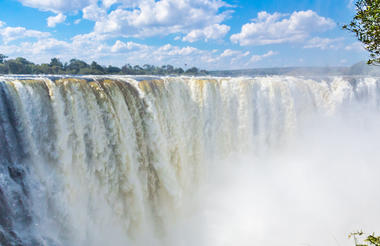
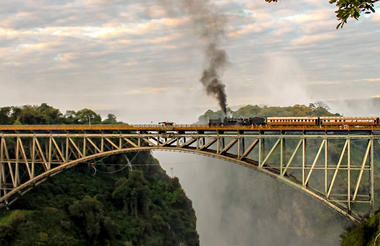
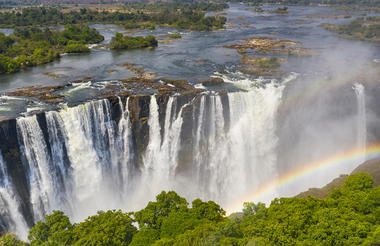

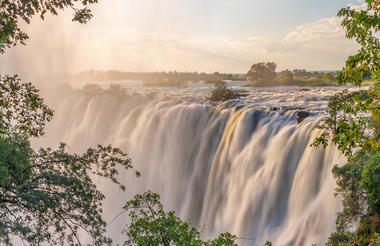
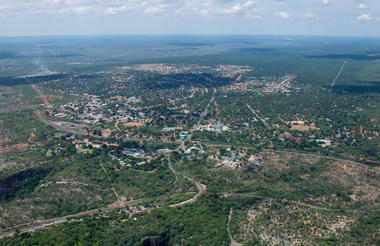
One of the original natural wonders of the world, the Victoria Falls is a World Heritage Site and an extremely popular tourism attraction. Known locally as ‘The Smoke that Thunders’ this spectacle is accessible from both Zambia and Zimbabwe and it is an ideal place to combine a game viewing and water sports. There is excellent fishing, a terrifying bungee jump and arguably the best commercial white water rafting in the world.
